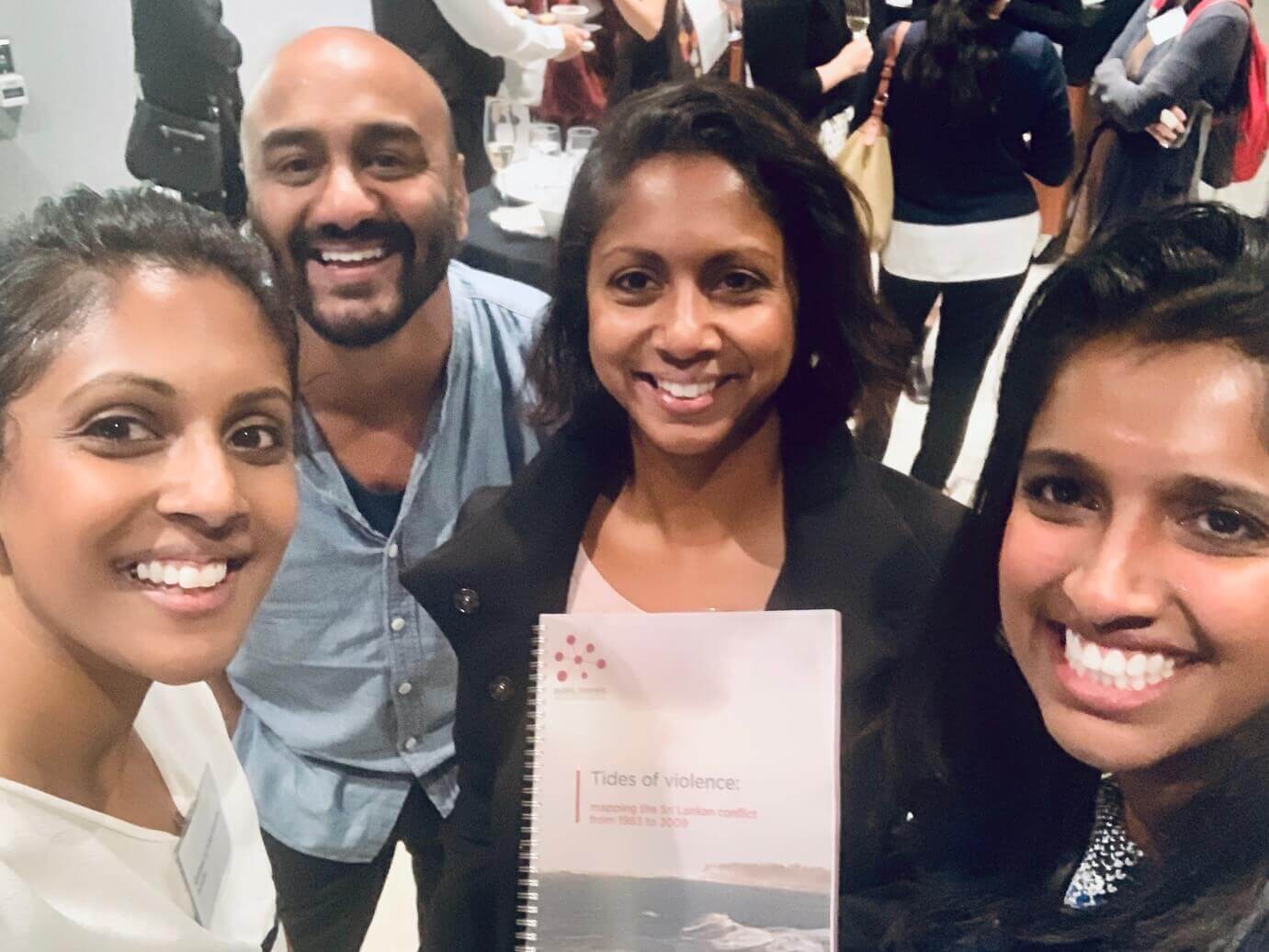Reflecting on PIAC’s Tides of Violence report

Recently, the Public Interest Advocacy Centre (PIAC) launched its report, Tides of Violence: Mapping the Sri Lankan Conflict from 1983 to 2009. It provides a detailed overview of the all too many human rights and international humanitarian law violations that took place during the Sri Lankan civil war. I was honoured to attend the launch with some of our wonderful Palmera supporters.
PIAC’s Conflict Mapping and Archive Project have done an incredible job putting together this report. Its rigour and detail makes it both awe-inspiring and heartbreaking. Aside from being a comprehensive source of data about the war, the report also offers food for thought for civil society, including charities and grassroots organisations working in Sri Lanka.
Conflict mapping
“A conflict map is an overview of the incidents that occurred during a conflict, often organised by geography and chronology. It provides a detailed inventory and analysis of the types of violations, the scale of alleged violations, potential patterns of abuses, potential victims and perpetrators, and identifies possible evidentiary leads or sources relating to a conflict” (p. 19)
The report takes the form of a conflict map: an overview of the incidents related to the civil conflict that took place across Sri Lanka from 1983 to 2009. Drawing from a variety of sources, the researchers have arranged these incidents according to when and where they occurred.
Conflict mapping is a great method for exploring the different aspects of a conflict. Instead of focusing on one perspective or group, it allows for the representation of the experiences of multiple stakeholders. It also allows for a record of what happened, to who, where and when. This can help those working in Sri Lanka to get a sense of what some of the challenges that are specific to the region might be.
Working in the north, for example, one of the things that we’ve been very aware of is the high number of women who were widowed in the war. This tallies with the dominant incident patterns laid out in the report (pp. 9-15), which include killings, improvised explosive devices, landmine and grenade attacks, and disappearances. Working with this group of women has meant that financial literacy mentoring and the development of advocacy skills have been especially important in our programming, alongside technical training.
This report will help those working in all regions of Sri Lanka to work out how their work might best support the specific context of an area. For example, there was a high incidence of child recruitment in the East from 2006 to 2009. This might lead those working in the East to consider how those involved (as many will still be young people, after all) might be best supported.
Transitional justice
“During almost three decades of civil war in Sri Lanka, there were thousands of alleged violations of human rights and international humanitarian law (IHL). While isolated cases have been addressed and inquiries have examined specific issues or time periods, Sri Lanka is yet to engage in a comprehensive, independent transitional justice process” (p. 18)
Conflict mapping plays an important role in transitional justice. As the authors of the report explain, mapping reports are used to encourage the establishment of transitional justice mechanisms; to help existing mechanisms develop informed research and investigation strategies; and to help civil society monitor the work of these mechanisms. They also become a valuable part of the historical record of a conflict (p. 213).
Many of the people that we work with still feel that past wrongs are yet to be righted. Their ongoing pain is only fuelled by the sense of injustice; that those who have hurt them and their families will go unknown and unpunished.
Conflict maps can be one part of the transitional justice. It brings violence perpetrated and suffered by all sides out into the open. Establishing formal transitional justice institutions is the next step – and is a very important next step. But in the meantime, civil society partners working in Sri Lanka can start to help to rebuild Sri Lanka from the ground up and to show Sri Lankans (and especially the most vulnerable members of society) that there can and will be a better future.
Lessons for civil society
“The gravity and widespread nature of these alleged violations are a stark reminder of the suffering people in Sri Lanka have experienced” (p. 213).
Charities and grassroots organisations work to heal the people they work with on multiple fronts: many will be injured, traumatised and grieving while living in situations of poverty, insecurity and hardship. Because of this, we need to provide support on multiple fronts.
This is something that became particularly apparent to me when we were putting together our recent Our Mothers’ Eyes event. As part of this exhibition, we told the stories of 48 women, in which they shared their experiences of the last ten years. The stories were full of heartbreak and desperation: some women had seen members of their family killed in front of them; others yearned for information on missing children. Many still suffered physical symptoms from injuries that they had received during the war, and all carried a heavy emotional burden.
These stories will be familiar to anyone working in development in Sri Lanka (or in any other post-conflict society which is still in the process of rebuilding). While data won’t fix the heartbreak or bring a loved one back, it does let charities and grassroots groups make their programming as tailored as possible. Data means that people feel heard, and know that the violence that befell their loved ones is at least acknowledged somewhere. This is at least a first step.
Interested in any of our projects or campaigns? Want to find out more about Palmera? Drop me an email at [email protected] – I’d love to hear from you!
Until next time,
Abarna
